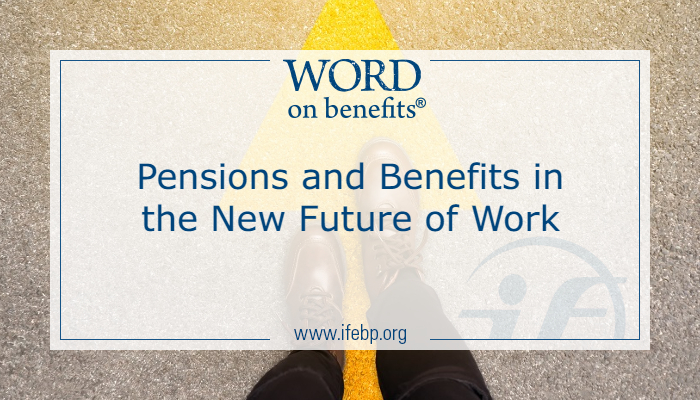
The emergence of the COVID-19 pandemic has accelerated changes in the workplace, with many organizations implementing new policies for remote work in weeks instead of years. Current and future areas of focus include workplace flexibility, the need for new skills, longer tenured employees, nontraditional career paths, digital benefit solutions, and perhaps even new models for delivering pensions and benefits, noted Kathryn Kitchen, a member of Manulife Canada’s executive leadership team and the global executive human resources (HR) team, in the July/August issue of Plans & Trusts.
“While some companies had work flexibility as an integral part of their practices and the technology infrastructure to support working from home, others had to scramble to quickly transition their on-site workforce into a virtual workforce,” said Simon Chan, vice president–future of work at Communitech. “It seems inevitable that in the wake of COVID-19, flexible working will become an increasingly integral part of the future of work.”

Emerging Workplace Trends
Other emerging trends include continuous learning, the evolving workplace and nontraditional career paths.
Continuous learning: Data has shown that 54% of employees will need fundamentally new skills by 2022, noted Kitchen. Organizations have had to immediately invest in their existing employees to help support them in areas such as flexible work schedules and new skills including how to cope and stay productive.
The evolving workplace: With five generations of employees in the workforce—each with its own life stage, values and priorities—employers need to prepare for a larger share of employees staying in the workplace well past traditional retirement age. Organizations will need to create plans for how to accommodate these individuals and how best to utilize the skill sets of experienced workers.
Nontraditional career paths: Changing workplace demographics and new technology have helped give rise to nontraditional career paths. Employees will likely make multiple transitions into different forms of work, including full-time work, part-time work, sabbaticals and gig jobs, Kitchen stated. Pension and benefit plans may need to change their structures to accommodate this movement away from just traditional full-time employment.
How Will Pensions and Benefits Adapt?
The past few decades have seen a growing trend of people engaged in part-time, temporary work—some of it by choice and some by necessity, Kitchen wrote. As a result, fewer people have access to workplace- or employer-provided pension and benefit plans.
“The concept of working for 40 years with one employer and retiring with a defined benefit pension program was impacted well before COVID-19, with funding adequacy being back in the spotlight as a result of the crisis,” said Kevin Higgins, national vice president, trustee, group benefits, at Manulife.
Retirement dates and savings patterns will likely change along with new forms of employment. Kitchen wrote that the multi-employer trade space could provide a potential template for earning benefits in the gig economy—for example, in sectors such as health care or education. “For the majority of unionized trades across Canada, an hour bank model is used in order to gain eligibility to benefits. As we have seen sectors pivot quickly to virtual delivery of services, such as health care and postsecondary education, the question will become whether this will change service delivery more permanently,” necessitating a change in how benefits are earned, Kitchen noted.
Digital Solutions on the Rise
Since the start of the pandemic, the number of benefit plan members using mobile apps, submitting electronic claims, and taking advantage of virtual enrollment and virtual health care has greatly increased. With more employees working from home, the industry will see an increase in the adoption of digital solutions—for both physical and mental health resources—as the new normal takes on more rootedness and employers figure out their service delivery models, Kitchen wrote.
“The COVID-19 crisis has provided a rapid acceleration of adoption rates for digital solutions and virtual services, and we believe that the demand for innovative delivery of services in the benefits space will be stronger than ever as organizations move into the next normal,” Higgins said.
Robbie Hartman, CEBS
Editor, Publications, for the International Foundation

The latest from Word on Benefits:
- Neurodivergence in the Workplace: Steps for Employers
- What Health Plan Sponsors Should Know About the Emerging Mental Health Needs of Youth
- Educating DC Plan Participants for the Long Hike to Retirement
- Reducing Loneliness: 4 Action Steps for Employers
- Building and Designing for DEI: Creating Employee Benefits That Work for All





